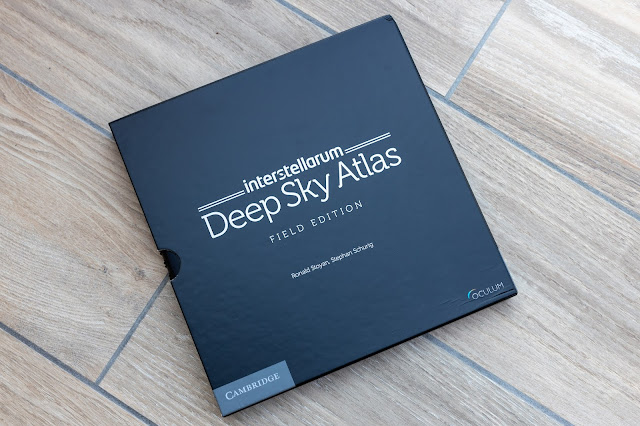One observing night at the Roque de los Muchachos at La Palma
I was on La Palma from January 15 to January 21 for a technical mission at the Mercator telescope. The weather was not very good, but I managed to get out the Orion Skyquest XT12i IntelliScope we have in the Mercator building on the first evening I was there.
I forgot already that the sky is so unbelievably good from the Roque de los Muchachos. There was quite some wind, but I could hide behind the car, so the wind did not disturb me that much. The telescope has a right angle finder and a telrad, but the batteries of the telrad were empty, so I could not use the telrad. Pointing the telescope with only a right angle finder is very difficult, so it was not easy to find the objects I was looking for.
It was quite cold, with a temperature of 2.3° when I started observing around 19h40 and a temperature of 3.7° when I stopped around 22h15. The humidity fell from 57.5% to 33.2% and the wind speed was around 6 m/s. I did not observe for a very long time, because I had to wake up very early to catch the plane this morning.
I measured the sky quality once, and the SQM gave a value of 21.96, the highest value I have ever measured. And the sky was indeed very dark! Through the 50mm finderscope, I could see an amazing number of stars, not only in the Milky Way, but everywhere I looked.
 |
| The Mercator telescope and the stars. |
I made a timelapse movie with my Canon EOS R. When I look at a single frame, I can clearly see a lot of deep-sky objects on a single frame of 12 seconds. The Orion nebula is of course very easy to see, but I could also spot fainter objects, such as the Flame Nebula (NGC 2024), the Horsehead Nebula, the Rosetta Nebula, and a hint of Barnard's loop.
 |
| A crop of the image, with the Orion, the Flame, the Horsehead and the Rosette nebula. |
 |
| The full frame picture of the Mercator telescope and the winter sky. |
The next object I observed was M 78. I always find this a difficult object in Belgium, but from La Palma the object was very nice. The northern part of the nebula stops abruptly, while the southern part fan out slowly into the background. 3 stars are visible in M 78. Very close to M 78, I could see NGC 2071, as a nebula with even brightness around a star.
I also looked at M 31, M 32, and M 110, the Andromeda galaxy. M 31 is amazingly large and the galaxy can be followed over different fields of view. M 31 is easy to follow up to M 32, which is a nice, round galaxy. M 110 is also a very nice galaxy very close to M 31. The galaxy is elongated (3-2) and I have the impression to see some mottling in the galaxy. If M 110 was not so close to M 31, it would certainly be a very interesting galaxy to observe.
The last observation was the Rosette Nebula. The open cluster (NGC 2244) is not really impressive. The central 6 stars are very obvious and form a nice rectangle. The Rosette nebula itself (NGC 2238) is very easy using a H-beta filter under the amazing La Palma sky. The northern part has an even brightness, while the southern part shows a lot of mottling and details. The nebula is very large and can be seen in several field of views.
I made the following timelapse:
The technical mission went very well and we could make a lot of progress on the control system of the Mercator telescope.


Nice observations Wim! Nice pictures too. M42 clearly visible, Flame nebula also. Even Bernard's Loop can be seen in it!
ReplyDeleteI really was amazed that I could see Barnard's Loop on the picture!
Delete